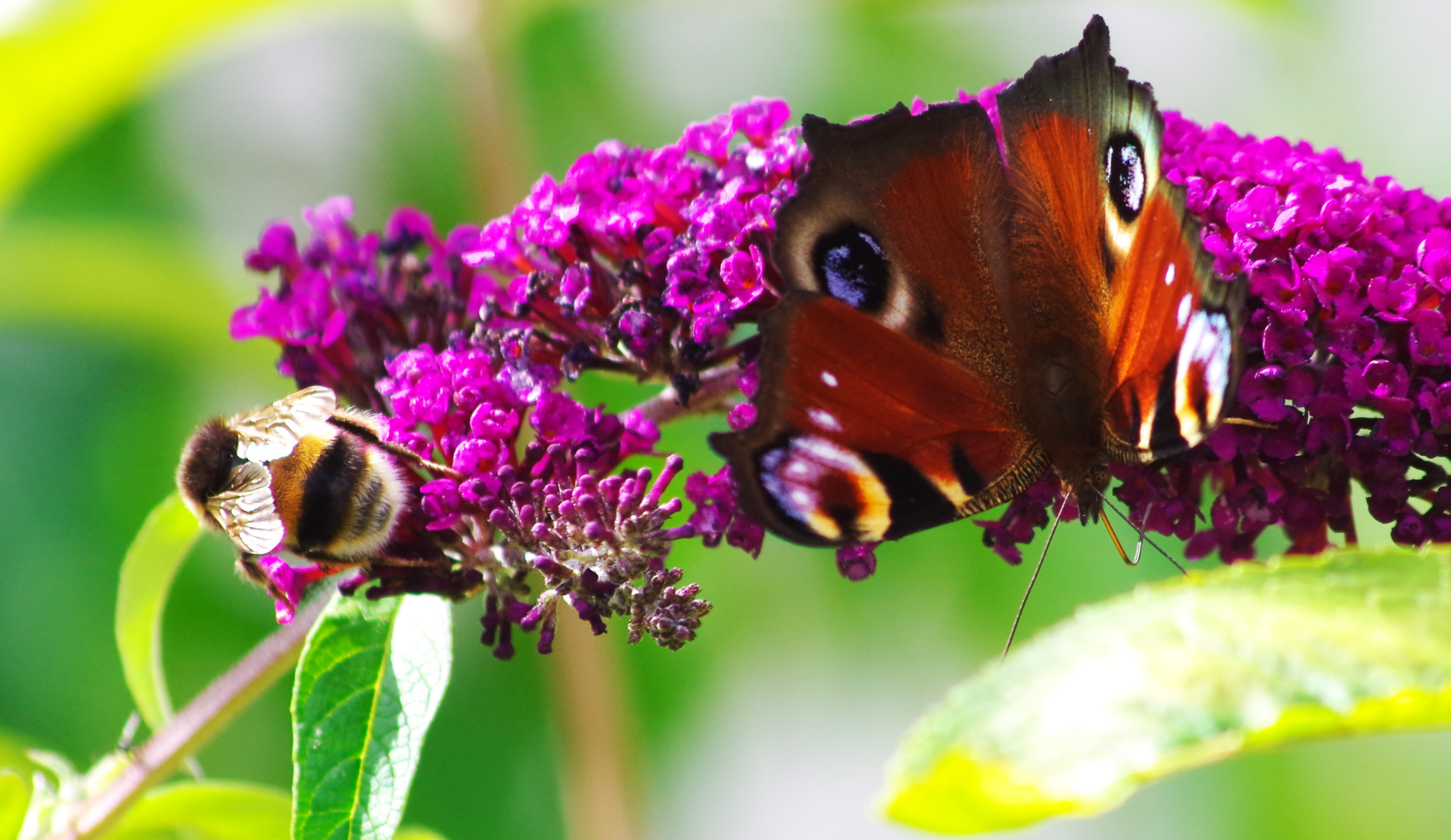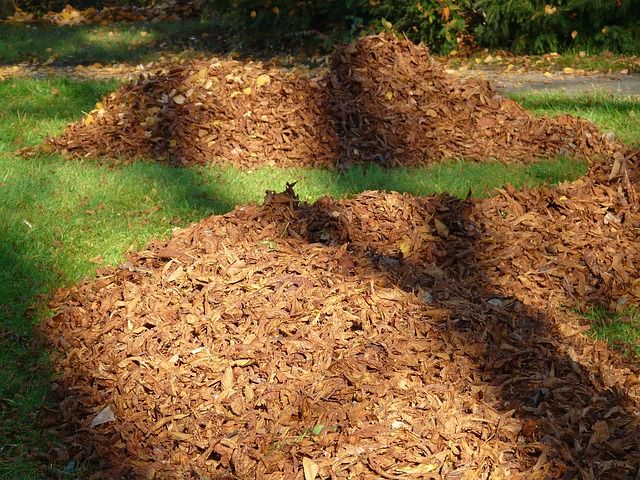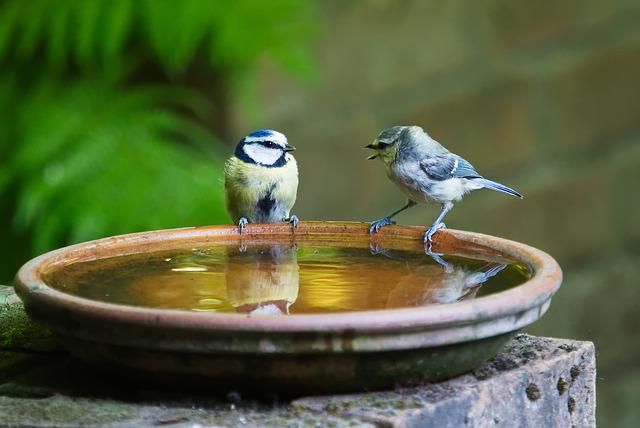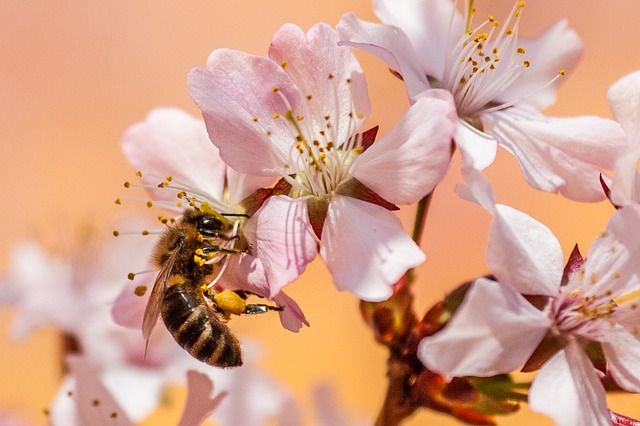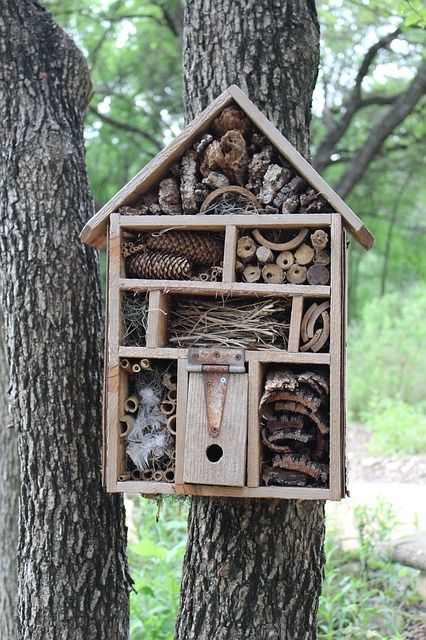A pollinator is any creature that is able to carry pollen from the stamen to the stigma of a flower. This exchange between the male and female parts must occur for plant fertilization. A pollinated plant produces fruits, seeds, and young plants. Pollinators are key to the health and evolution of your backyard garden. Not to mention they can be beautiful creatures that add charm to any outdoor space.
There are many different types of pollinators; from insects to birds and mammals. While flies, wasps, and moths are pollinators, many gardeners are not a huge fan of having swarms in their backyards. Today we will focus on attracting the most common pollinators that the majority of people don't mind having around. These include: bees, hummingbirds, butterflies, and beetles.
Materials Needed
- shallow container
- nectar-rich flowers
- fruit and vegetable plants
- plastic plant pot
- plate
- repurposed box
A Step-by-Step Guide to Start a Pollinator Garden
Step One: Don't Clean up Your Yard
Image Credits: Hans via Pixabay
Believe it or not, the first step to creating a friendly environment for pollinators is an untidy yard. A manicured lawn may be aesthetically pleasing to some, but not to your pollinators. Leaving un-raked leaf piles, bundles of twigs, and some bare ground provides your pollinators with shelter and even homes throughout the winter. Leaf piles, for example, act as a natural butterfly nursery. Likewise, deadwood is home to many pollinating beetles. Bumblebees, on the other hand, like to nest in open patches of bare soil. They improve soil quality by breaking up nutrients found within the soil while increasing water movement around plant roots.
Remember not to use harmful pesticides in your garden. Let your outdoor space remain as natural as possible!
Step Two: Create a Water Source
Image Credits: aitoff via Pixabay
Pollinators thrive in your garden when they have water access. They require water for drinking as well as reproduction. If your backyard space already comes equipped with a pond or stream, you're laughing! However, for those of us who don't have this, there are simple ways to create a water source for your pollinators.
While hummingbirds generally prefer running water, bees and butterflies aren't as particular. Butterflies find shallow pools and mud baths appealing. Many pollinators also love bird baths or hanging drip bottles. Create a simple homemade bath by filling a shallow container with water and leaving it out in the open. Just remember to change the water two to three times per week once the warm weather hits. Otherwise, you create a hotspot for breeding mosquitoes!
Step Three: Feed Pollinators
Image Credits: Kollinger via Pixabay
The best way to feed your pollinators is by planting flowering plants. There are countless numbers of flowers that attract pollinators. Brightly colored, tubular-shaped flowers, for example, are best for attracting hummingbirds. You want to diversify as much as possible.
Step Four: Plant an Edible Pollinator Garden
Image Credits: Kathas_Fotos via Pixabay
If you're wondering which edible plants can be used to attract pollinators, look no further! While bright, nectar-rich flowers are a sure way to attract pollinators, many fruit and vegetable plants are also enticing.
Tomatoes are a self-fertile plant that produce larger, rounder and more richly coloured fruit with the pollinating aid of small bumblebees. Watermelons, on the other hand, require pollination by bees to produce any successful crops. They are also an extremely nutritious and delicious fruit to grow in your own backyard if you have the space. Blueberries and cranberries are pollination hosts to specialist bees and are great bush fruit options for a pollinator garden.
On the vegetable side of things, bean plants are a great pollination site for many different kinds of bees. Fava beans for example, host small bees that are most active in cool weather, while runner beans are loved by bumblebees. The flowers of pumpkins, winter squash and gourds attract numerous bees to your garden, at a time when other pollen sources are scarce.
If you are more of a herb garden lover, planting oregano, marjoram, mint or rosemary is a delicious way to bring bees into your space. There's nothing like the scent and taste of fresh-grown herbs, and your pollinators will agree!
Step Five: Build Homes
Image Credits: deanna4321 via Pixabay
While pollinators can be plentiful during blooming season, they do require shelter as well as places to lay their eggs and overwinter. Instead of cleaning out your garden in the fall, try waiting until late spring; allowing natural pollinator habitats to flourish. Long grasses and perennials provide great shelter and are attractive to pollinators throughout the winter. Leaf piles provide shelter for butterflies and moths who overwinter within them as pupae.
While leaving some natural elements in your garden is crucial, you can create homes simply and cheaply for certain pollinators.
Using a plastic, ventilated pot, and a plate, you can easily create your own bumblebee nest. Simply fill the pot with two thirds full of grass, moss and/or wood chips, and set it upside down on the ground in the shade. Weighing it down with a plate allows air to permeate through the drainage holes.
To aid in pest control, while providing pollinating insects with a safe haven to overwinter, create your own homemade bug hotel. These can be made from a repurposed box or milk carton. Fill the box with cut bamboo, a mix of twigs, stems, seed heads, pinecones, or wood shavings. Voila! The ultimate winter resort for your pollinating insects!
To Conclude
Pollinators are necessary for the prosperity and evolution of your backyard garden. Providing pollinators with shelter, water and food, entices these creatures to come back year after year. Keeping your area as natural as possible is key. Remember, a manicured lawn may have certain curb appeal, but it's not going to entice any bees, butterflies or hummingbirds to stick around. Planting nectar-rich flowering plants as well as fruits and vegetables benefits both you and a multitude of pollinators. Providing an overwinter home for these critters is an added bonus to ensure your garden is well-pollinated year-round!

